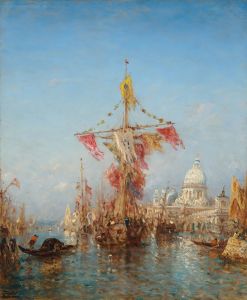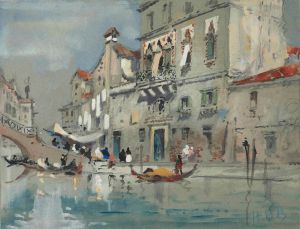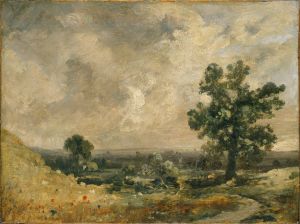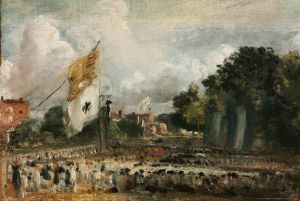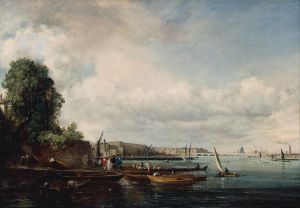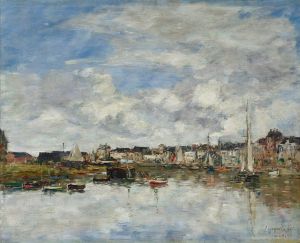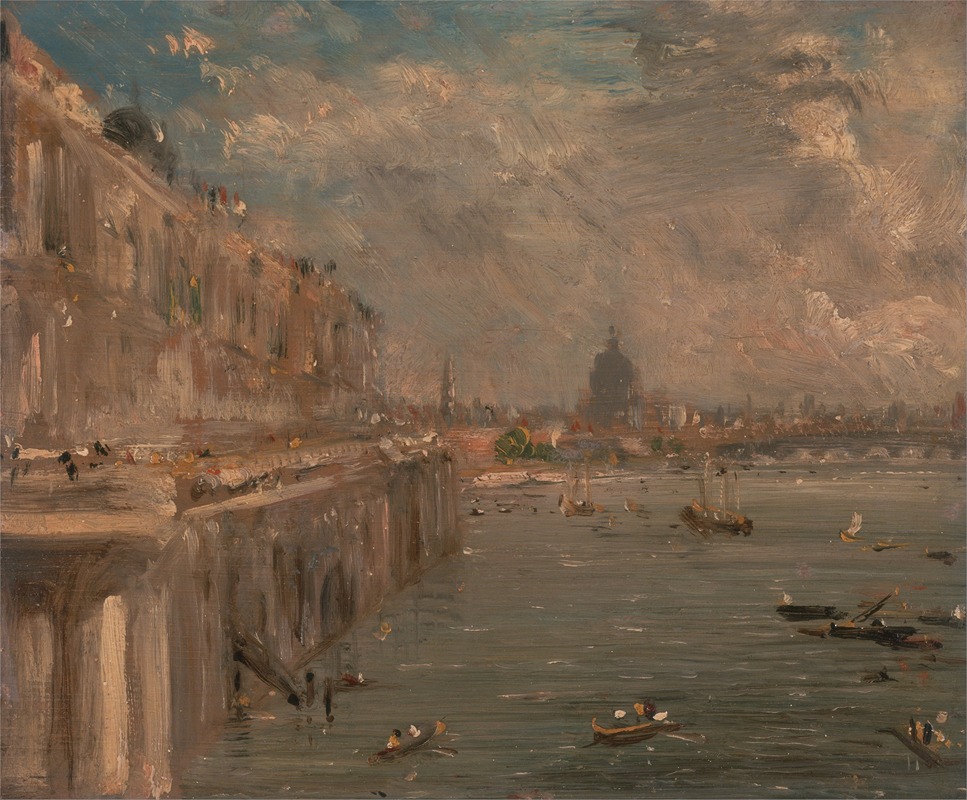
Somerset House Terrace from Waterloo Bridge
A hand-painted replica of John Constable’s masterpiece Somerset House Terrace from Waterloo Bridge, meticulously crafted by professional artists to capture the true essence of the original. Each piece is created with museum-quality canvas and rare mineral pigments, carefully painted by experienced artists with delicate brushstrokes and rich, layered colors to perfectly recreate the texture of the original artwork. Unlike machine-printed reproductions, this hand-painted version brings the painting to life, infused with the artist’s emotions and skill in every stroke. Whether for personal collection or home decoration, it instantly elevates the artistic atmosphere of any space.
"Somerset House Terrace from Waterloo Bridge" is a painting by the renowned English Romantic painter John Constable. Constable, born in 1776, is celebrated for his landscape paintings, which often depict the English countryside with a focus on natural light and atmospheric effects. This particular work, however, diverges from his usual rural scenes, capturing an urban landscape instead.
The painting portrays a view from Waterloo Bridge, looking towards Somerset House, an iconic neoclassical building situated on the south side of the Strand in central London. Somerset House has a rich history, originally built in the 16th century and later reconstructed in the 18th century, serving various governmental and cultural functions over the years. By the time Constable painted this scene, Somerset House was already a significant landmark in London.
Constable's depiction of Somerset House from Waterloo Bridge is notable for its attention to detail and the atmospheric quality that characterizes much of his work. The painting captures the bustling activity of the Thames River, with boats and barges visible on the water, reflecting the commercial vitality of London during the early 19th century. The sky, a crucial element in Constable's compositions, is rendered with dynamic cloud formations, suggesting a transient moment in time and adding a sense of movement to the scene.
This work is part of Constable's broader exploration of urban landscapes, which he undertook later in his career. While he is primarily known for his depictions of the Suffolk countryside, Constable's urban scenes demonstrate his ability to convey the vibrancy and complexity of city life. The painting reflects his interest in the interplay between natural and man-made environments, a theme that runs throughout his oeuvre.
Constable's technique in this painting, as in many of his works, involves the use of loose brushwork and a keen observation of light and weather conditions. His ability to capture the changing effects of light and atmosphere was innovative at the time and influenced subsequent generations of artists, including the Impressionists.
"Somerset House Terrace from Waterloo Bridge" is an example of Constable's mature style, where he combines his love for nature with an appreciation for the architectural beauty of urban settings. The painting is a testament to his skill in rendering both the grandeur of London's architecture and the ephemeral qualities of its weather.
While not as widely known as some of his other works, such as "The Hay Wain" or "Dedham Vale," this painting contributes to our understanding of Constable's artistic range and his capacity to find beauty in diverse settings. It remains an important piece within the context of his body of work, illustrating his versatility and his enduring fascination with the effects of light and atmosphere on the landscape.





